Below a breathless, ultra-compressed, often telegraphic account of these 40 years of democracy, each one of them witnessed by this journalist from the newsrooms of the Buenos Aires Herald (1983-2017) and this medium since then:
RAUL ALFONSÍN, 1983-1989
1983. The new Radical president hits the ground running, announcing the trials of the military juntas and the guerrilla leaders responsible for 1970s violence, as well as the CONADEP truth commission to verify the factual substance for those trials in the first week of his Presidency. A Supreme Court of independent civilian justices is in place before Christmas.
1984. CONADEP completes its work in September. The Beagle Channel Treaty with Chile gains 82 percent approval in a plebiscite. A year of growth (2.6 percent) but unresolved economic problems such as an extremely high but steady inflation of 683 percent (20-plus percent monthly, mostly index-linking) and a double-digit fiscal deficit. The first of 13 general strikes against Alfonsín in early August.
1985. For the junta trials see the film Argentina, 1985. The new Economy Minister Juan Sourrouille’s Austral Plan, a wage-price freeze de-indexing the economy, brings monthly inflation down to two percent by October, winning the midterms for the Radicals.
1986. The Punto Final (“Full Stop”) law to place a time limit on further military trials is approved at the end of the year. In April Alfonsín moves the capital to Viedma (never taken off the statute books). Divorce is finally legalised in August. Inspired by Diego Maradona, Argentina win the World Cup final 3-2 against West Germany in Mexico.
1987. The Punto Final law only accelerates human rights trials and hence military unrest, triggering the carapintada Easter rising – Alfonsín proclaims a “house in order” but at the price of deepening amnesty legislation with the due obedience law. Dented moral prestige plus the wheels coming off the Austral Plan lead to midterm meltdown with the party initials of UCR being reworked to “Unicamente Córdoba y Ríonegro.” Pope John Paul II pays a weeklong visit.
1988. A year sandwiched by a carapintada Army mutiny at each end. The privatisation drive of the new Public Works Minister Rodolfo Terragno is blocked by a Peronism which adopts his ideas in the following decade. Nor can the Spring Plan of a phased price thaw reverse the tide. A moratorium on foreign debt payments. A nationwide Peronist primary with 1.5 million sees the favourite Buenos Aires Province Governor Antonio Cafiero lose the presidential nomination to his maverick La Rioja colleague Carlos Menem.
1989. The year is off to a bad start with the bloody leftist seizure of La Tablada barracks. Hyperinflation reaches a monthly 197 percent by midyear amid mass supermarket looting dooms any continuation of Radical government, bringing the transfer of power forward from December to July.
CARLOS MENEM, 1989-1999
1989. Winning the May election with 47.5 percent in the year of the Berlin Wall, Menem makes a strategic alliance with the Bunge & Born multinational but fails to turn around an economy which slumps seven percent that year, losing his first economy minister to a heart attack in just six days (and his health minister in an air crash two months later). A state reform law in August gives privatisations a green light. Bunge & Born are replaced at the end of the year by the Plan Bonex of the new Economy Minister Ermán González forcibly converting bank deposits into long-term dollar bonds.
1990. Inflation stays sky-high at 2,314 percent but at least produces a huge trade surplus (exports up 34 percent, imports down two-thirds). A wave of privatisations spearheaded by telephones and Aerolíneas Argentinas. Relations with Britain are restored. Menem creates an “automatic majority” in the Supreme Court by packing it from five to nine justices. Swiftgate is the first of many corruption scandals marring the Menem Presidency. Argentina lose the World Cup final in Italy – again playing Germany. The year ends with the last carapintada uprising (with United States President George Bush in town to thank Argentina for Gulf War support) and Menem pardoning the military juntas.
1991. Switching from the Foreign to the Economy Ministry at the start of the year, Domingo Cavallo introduces ‘convertibility’ or dollar-peso parity in April, bringing inflation down to 84 percent that year and 2.4 percent in its last quarter with 10.5 percent growth, thus ensuring a comfortable midterm victory. Easter sees the creation of Mercosur at the Treaty of Asunción. Yomagate follows Swiftgate. A census gives the population as 32.6 million.
1992. Terrorists blow up the Israeli Embassy on Saint Patrick’s Day. Otherwise convertibility ensures plain sailing with 10.2 percent growth while the Brady Plan including debt-equity swaps eases the balance of payments.
1993. Continued growth (6.3 percent) brings Menem midterm triumph even in this city and the Olivos Pact with Alfonsín sets him up for re-election.
1994. Constitutional reform gives Menem the right to seek re-election in return for institutional innovations such as a Cabinet chief (a pseudo-premier), the autonomy of this city, the enshrinement of human rights (extended to the indigenous) and various other changes too numerous for this space. An even worse terrorist attack blows up the AMIA Jewish community centre with 85 dead in July. The IBM-Banco Nación corruption scandal erupts.
1995. Two months after losing his only son in a helicopter crash, Menem wins re-election with almost half the vote, even if Brazil’s devaluation results in negative growth that year, his majority perhaps boosted by the abolition of conscription shortly beforehand. The Río Tercero munitions plant blows up with seven dead, suspected to be a cover-up of gun-running to Croatia and Ecuador in the previous five years.
1996. Cavallo is dumped as minister after criticising corruption. Radical Fernando de la Rúa becomes this city’s first elected mayor. The first pickets ever down in Neuquén.
1997. Despite eight percent growth that year, Menem suffers a crushing midterm defeat with only 36 percent of the vote – the causes are a newfound opposition unity with the Radicals and the dissident Peronists of Frepaso teaming up in Buenos Aires City and Province and nine other provinces in the Alianza formed that winter, growing voter fatigue with a president subordinating all governance to seeking a third term and convertibility taking a new knock with Asian flu. Early in the year news photographer José Luis Cabezas is murdered in Pinamar with Menem’s tycoon ally Alfredo Yabrán suspected. Teachers set up their carpa blanca white tent to protest being underpaid.
1998. The Russian crisis is the third external shock leaving convertibility looking increasingly shaky. De la Rúa wins the primary of a now fully united Alianza with 62 percent of the vote. The Council of Magistrates is set in motion in a year dominated by Menem’s sterile quest for a third term.
1999. Another Brazilian devaluation early in the year sends a shrinking economy stubbornly clinging to convertibility into recession with unemployment reaching 14 percent and power cuts. Forced to end his Presidency with the century, Menem does little enough to help his heir apparent Buenos Aires Province Peronist Governor Eduardo Duhalde, who finishes 10 points behind City Mayor De la Rúa (48.4 percent), whose “they say I’m boring” campaign promises a more normal and honest government.
FERNANDO DE LA RÚA, 1999-2001
2000. Taking office three weeks before the turn of the century, De la Rúa’s first year is anything but a honeymoon with his vice-president Carlos ‘Chacho’ Alvarez resigning in October over charges that presidential aides had bribed the Peronist Senate into approving labour reforms. By upping taxes and slashing the pay of public employees, his first Economy Minister José Luis Machinea manages to coax a Blindaje salvage package of almost US$40 billion out of the International Monetary Fund (IMF) but there is negative growth throughout the Alianza Presidency with unemployment topping 18 percent. The first four of eight general strikes against De la Rúa (same number as the Menem decade).
2001. A year ending in that famous helicopter flight from the Casa Rosada with Argentina’s worst crisis ever coming to a head in the last month starting with the corralito restrictions on bank withdrawals. After rejection of the drastic spending cuts proposed by Ricardo López Murphy lasting barely a fortnight in the Economy Ministry, Cavallo returns in March with hardly less orthodox policies including slashing pensions and public employee pay by 13 percent. In November he embarks on negotiating a mega-swap to ease the foreign debt burden but too little, too late with an impatient IMF giving him no joy. A census gives Argentina’s population as 37,480,493.
ADOLFO RODRÍGUEZ SAÁ, ETC. 2001-2002
2001, 2002. Following a three-day Ramón Puerta Presidency (December 20-23), five-term San Luis Peronist Governor Adolfo Rodríguez Saá defaults on some US$100 billion of foreign debt before Christmas (to an applauding Congress) and is out before the New Year, followed by Speaker Eduardo Camaño for three days spanning two years.
EDUARDO DUHALDE, 2002-2003
2002. President from the second day of a year of double-digit economic contraction (-10.9 percent), Duhalde entrusts his provincial minister Jorge Remes Lenicov with the dirty work, via relaunching the currency with the corralón (much tougher than the corralito restrictions) forcibly converting all dollar deposits at 1.40 pesos per greenback when the going rate is three pesos. After four months Lavagna takes over the recovery from meltdown and quickly lifts the bank restrictions. But the police slaying of two pickets at Avellaneda railway station (since renamed) in midyear removes all Duhalde’s appetite to complete De la Rúa’s term.
NÉSTOR KIRCHNER, 2003-2007
2003. Three-term Santa Cruz Governor Néstor Kirchner (Duhalde’s third choice after the governors of two larger provinces) receives the caretaker president’s backing for advanced April elections which he loses to Menem, who nevertheless ducks out of a no-hope run-off. With only 22 percent of the vote Kirchner embarks on a remarkable construction of power (which could usefully be consulted now). He names a Cabinet more centre than left, retaining Lavagna who presides comfortably over twin fiscal and trade surpluses plus “Chinese” growth of 8.8 percent (average of 8.6 percent throughout the Presidency) – “ordinary people doing extraordinary things” in the words of US Ambassador James Walsh. Kirchner also moves to purge Menem’s “automatic majority” in the Supreme Court.
2004. On March 24 Kirchner ostentatiously orders the Army chief-of-staff to take down portraits of junta presidents in the military academy, apologising for “20 years of state silence” over dictatorship atrocities (outrageously overlooking the 1985 junta trials) – he also converts the former ESMA Navy Mechanics School concentration camp into a memory museum site, thus marking the start of the Kirchnerite alliance with human rights organisations. The year ends tragically with the Cromañón nightclub blaze killing 194 people (a higher toll than any terrorist attack). Otherwise more of the same – nine percent growth, twin surpluses, Supreme Court overhaul, etc.
2005. Kirchner comfortably wins the midterms shortly after dumping Lavagna (questioning corruption like Cavallo) who earlier in the year had negotiated a 66 percent debt haircut with 76 percent creditor acceptance – in the process he ends Duhalde’s tutelage via his wife defeating his predecessor’s wife in the Buenos Aires Province senatorial elections. Emboldened, he ostentatiously snubs US President George W. Bush at the Summit of the Americas the next month.
2006. Kirchner starts the year by following up snubbing Bush with putting the IMF in their place, paying off Argentina’s debt of US$9.5 billion in full and thus ending their monitoring. At the end of the year Kirchner completes the downsizing of the Supreme Court from nine to five mostly independent justices. Tension with Uruguay over the pulp mills across the river.
2007. Early in the year Kirchner sends Guillermo Moreno into the INDEC national statistics bureau to doctor the figures in the face of incipient inflation, ending his Presidency with public spending almost 30 percent of the economy. In midyear he waives re-election on his wife’s behalf. Snow in this city in July.
CRISTINA FERNÁNDEZ DE KIRCHNER, 2007-2015
2007. Elected with a vote of 45.3 percent after a “Cristina, Cobos y vos” (mentioning her Radical running-mate) campaign with Mauricio Macri becoming the mayor of this city, CFK runs into scandal almost immediately with post-electoral exposure of Venezuelan campaign funding via courier businessman Guido Antonini Wilson. On a more positive note she immediately creates a Science & Technology Ministry under the prestigious molecular biologist Lino Barañao.
2008. In March the government submits a bill to Congress to place grain export duties on a sliding scale of up to 90 percent (theoretically), sparking an all-out confrontation with the farming sector until the bill is defeated in the Senate in mid-July by the “not positive” vote of her own vice-president. CFK makes up for the revenue shortfall by grabbing the AFJP private pension funds. Aerolíneas Argentinas is also renationalised.
2009. The subprime global financial crisis of the previous year hits Argentina hard with an economic contraction of six percent and the Victory Front loses the midterms with Néstor Kirchner in person topped by an Unión-PRO list in Buenos Aires Province. The immediate government reaction is to introduce PASO primaries to weed out fringe candidates since Unión-PRO’s margin was less than the vote of a Peronist splinter list.
2010. Bicentennial year with millions out in the street to enjoy the jamboree as the economy rebounds with double-digit growth (10.35 percent). In July Argentina becomes the first Latin American country to legalise gay marriage. But less joy for the President in spring when her husband Néstor Kirchner (60) dies on the day of the census (40,117,096 Argentines).
2011. A widowed President is re-elected with a landslide 54.1 percent of the vote, over 37 percent ahead of anybody else – continuing growth of over six percent helps, apart from the sympathy votes.
2012. With Vaca Muerta shale recently discovered, the state expropriates 51 percent of YPF shares from Spain’s Repsol, ignoring the other shares with consequences which persist to this day. The economy dips slightly. The Once rail tragedy happens, killing 51 people.
2013. Argentina can say “Habemus papam” with Pope Francis (a name enthusing the President considerably more than Jorge Bergoglio). Midterms are once again adverse for Kirchnerism – top of a fragmented heap with just under a third of the vote but the Victory Front only ahead in eight provinces and again losing badly in Buenos Aires Province, this time to Sergio Massa’s new dissident Peronist Renewal Front. CFK launches a campaign to “democratise” (i.e. control) the Judiciary, polarising society.
2014. A major devaluation of an overvalued currency after seven years of inflation denial at the start of a year ending in a downtick for the economy (-2.5 percent). Adverse rulings in the litigation with so-called “vulture funds.” Lionel Messi’s Argentina reaches the World Cup final in Brazil but loses – to Germany yet again.
2015. Early in the year AMIA bombing special prosecutor Alberto Nisman dies from a gunshot to his head, a case remaining unclarified to this day. Despite all her efforts CFK can no more aspire to a third term than Menem.
MAURICIO MACRI, 2015-2019
2015. At the head of the centre-right Cambiemos (basically his PRO allied to the Radicals and other minor forces), City Mayor Macri wins a run-off against Peronist Daniel Scioli with 51.3 percent of the vote. CFK refuses to hand over the presidential sash and baton to him, making Senator Federico Pinedo president for one morning. Despite the overall gradualism of his Presidency, Macri hits the ground running, unifying the exchange rate via a 42 percent devaluation and removing all farm export duties except soy before the year is out. He also tries to decree two new Supreme Court justices in his first month but has to submit to the usual procedure.
2016. In April Macri reaches agreement with the last debt holdouts, paying them off with a 27 percent haircut. Lacking Congress majorities, he moves more slowly after his initial burst of action with his main drive to update long frozen transport fares and utility billing against consumer resistance in public hearings. A new anti-picket protocol does little to reduce protests. The bicentennial of Argentine independence is marked far less effusively than the May 25 of 2010.
2017. Macri’s one year of positive growth (2.9 percent, even if relative prosperity leads to a trade deficit) helps him to midterm victory boosted by Peronism being divided into three lists (Kirchnerism, traditional and Massa) with his relatively unknown Education Minister Esteban Bullrich outvoting Cristina Fernández de Kirchner herself in Buenos Aires Province senatorial voting. But things turn sour thereafter. Emboldened by electoral success to implement pension reform, his legislation obtains smooth passage through Congress but runs into violent protests at the end of the year. The submarine ARA San Juan is lost with all its crew in mid-November.
2018. A crisis of confidence starts in April when foreign investors pull out of Lebac bonds, triggering a run on Central Bank reserves (almost US$1.5 billion sold on the first day alone) and prompting Macri to change his economic team – by early May he has already turned to the IMF, eventually negotiating a stand-by loan of up to US$57 billion. But turbulence persists with the economy dipping by minus 2.6 percent amid 47 percent inflation and a major drought not helping. Yet Macri still commands the international prestige to host the G20 summit in November.
2019. Despite mounting economic woes Macri is still considered competitive by most pollsters with Cristina Fernández de Kirchner dropping under Alberto Fernández on the opposition ticket being considered almost a confession of weakness so that Frente de Todos (finally joined by Massa) finishing fully 16 points ahead in the August PASO primary comes as a real shock, sending markets and the exchange rate tail-spinning and inflation soaring – Macri, who had pledged “zero poverty” when he started, sees the poor rise from 32 to 35 percent on his watch. The president boosts his vote from the PASO 31.8 percent to 40.3 percent in the general elections but it is not enough.
ALBERTO FERNÁNDEZ, 2019-2023
2020. Elected in the first round with 48.2 percent of the vote, President Fernández has little chance to do anything before Covid-19 enters Argentina early in the year, causing him to declare lockdown in March – the economy has crashed by minus 9.9 percent by the end of the year and 130,000 Argentines have died before the Health Ministry stops counting in public. “Captain Alberto” earns brownie points for firm leadership and active social assistance with popularity ratings of up to 80 percent in the second quarter of 2020 but Olivosgate (the first lady’s rule-breaking 39th birthday party) dents his credibility perhaps fatally. Maradona dies (not of Covid-19). On the penultimate day of the year abortion is legalised.
2021. A rare case of double-digit economic growth (10.3 percent, mostly rebound) being accompanied by electoral defeat – in the midterms Juntos por el Cambio claims 42.7 percent of the vote as against 34.5 percent for Frente de Todos (the results also include the libertarians Javier Milei and Victoria Villarruel winning maiden Congress seats in this city). Quarantine measures are not fully lifted until November. Menem dies on Saint Valentine’s Day.
2022. At the end of this year the team of Lionel (Messi and Scaloni) win the World Cup in Qatar against France on penalties and some five million people take to the streets to greet them on their return. The Russian invasion of Ukraine knocks the world off balance with inflation everywhere but here close to three digits (94.8 percent). Drought deepens in the second half yet there is still a trade surplus of US$7 billion (despite energy imports of US$12 billion). In September, Vice-President Cristina Fernández de Kirchner survives an attempted assassination outside her apartment block in Recoleta. Economy Minister Martín Guzmán gives up fighting Kirchnerism with Congress Speaker Massa replacing him. The 2022 Census gives a population of 47,237,407 although the latest figure after more than one change is 46,234,830.
2023. President Fernández’s government continues to lead the country into economic decline as inflation soars to 140 percent per annum. But in retrospect, this year seems like one long build-up for Milei becoming president this weekend…









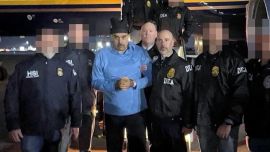








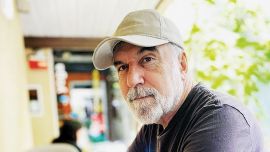

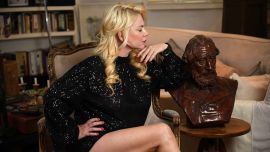
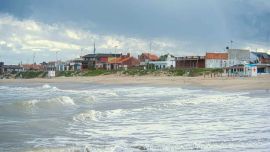
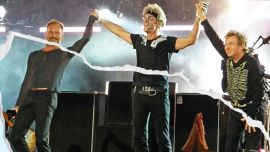
Comments